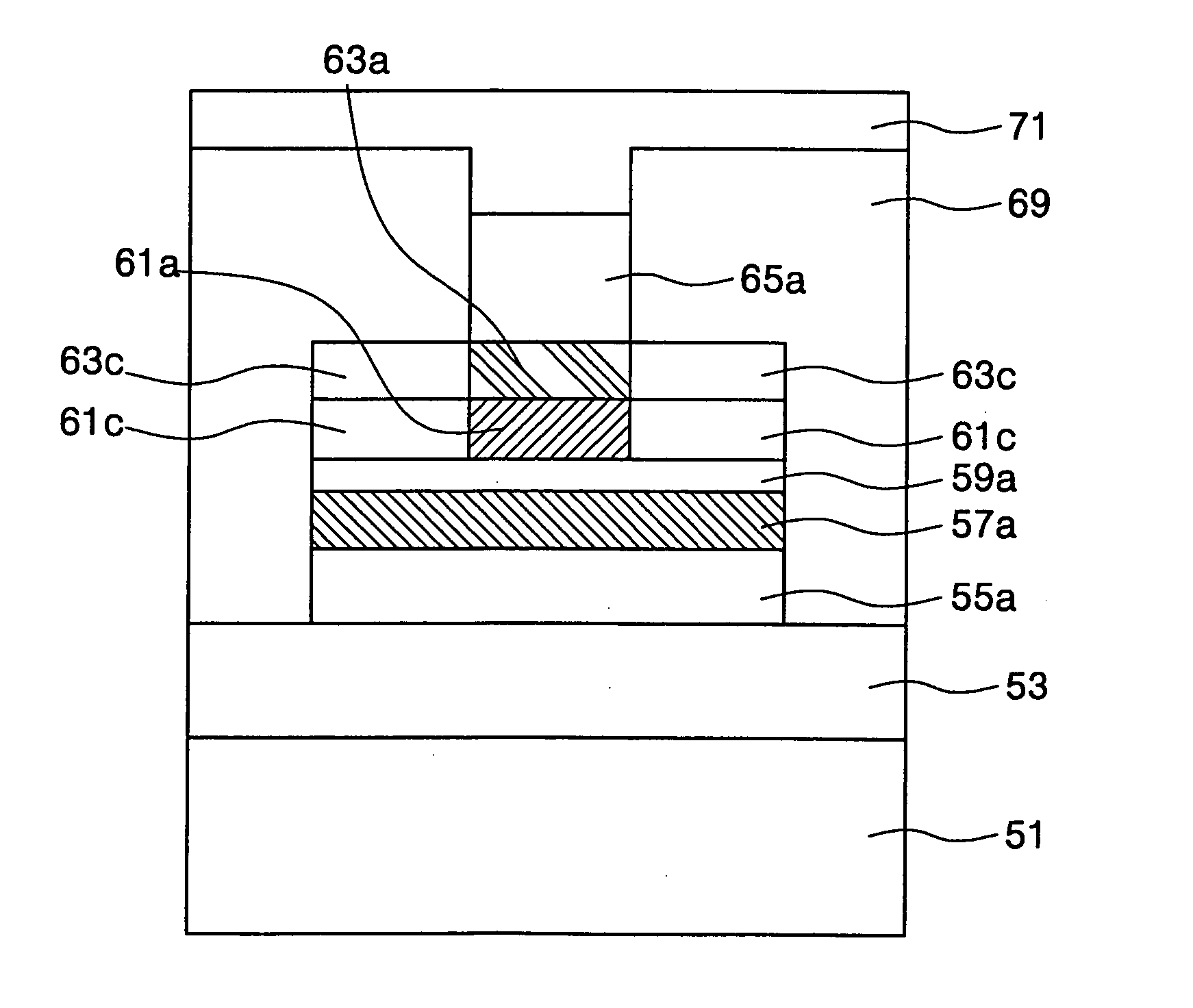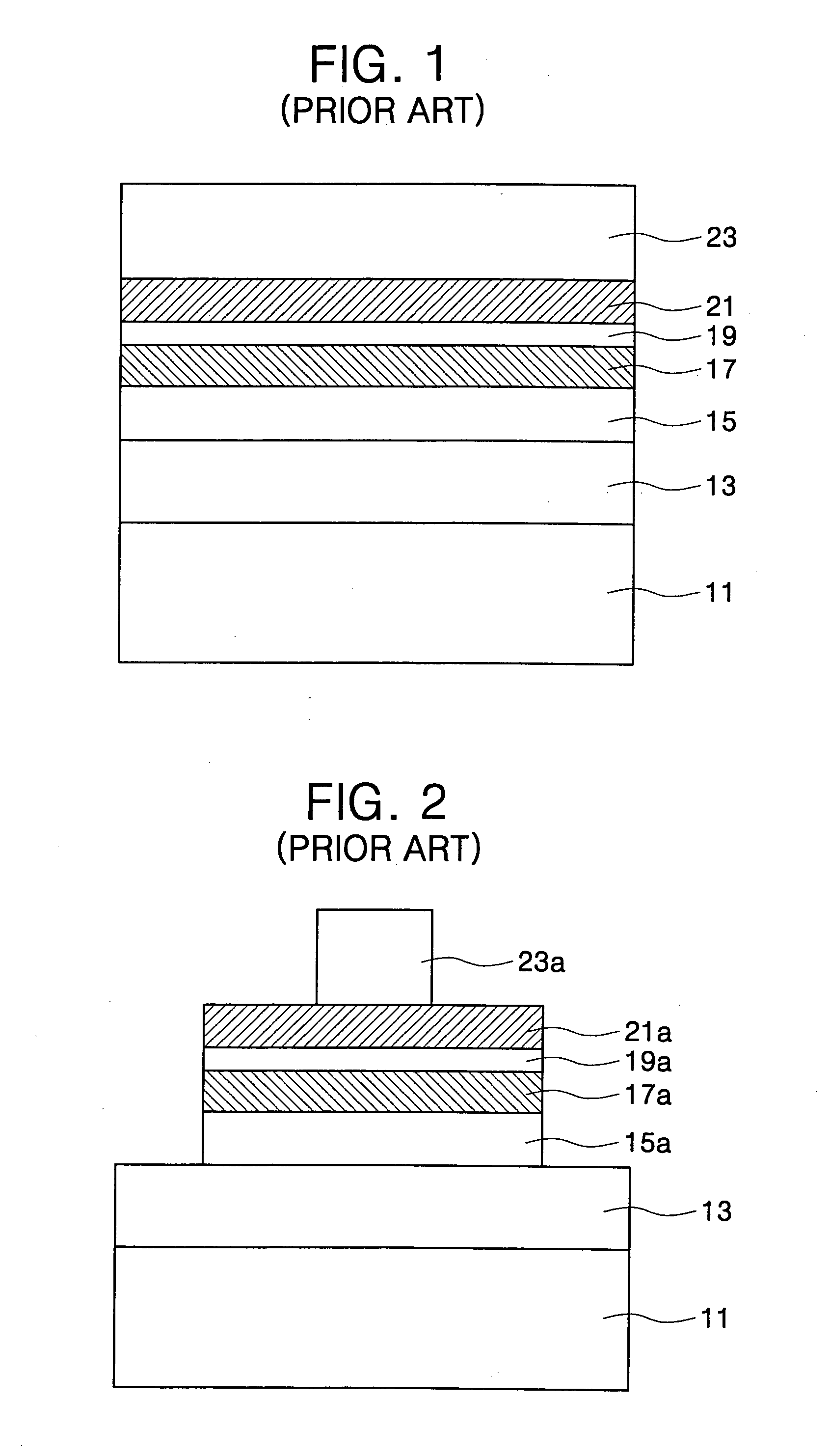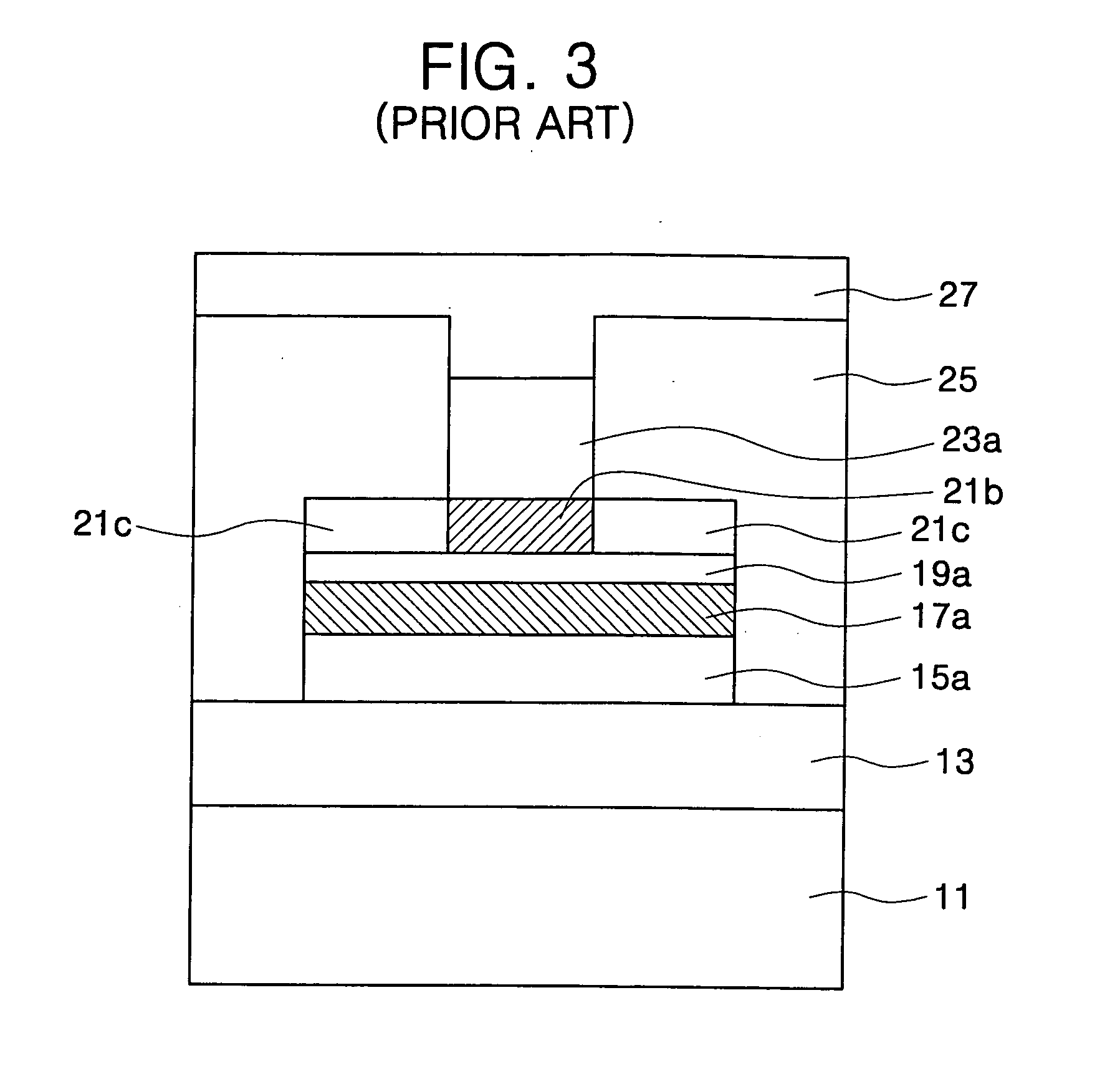Magnetic tunnel junction structure having an oxidized buffer layer and method of fabricating the same
a tunnel junction and buffer layer technology, applied in the field of magnetic tunnel junction structures, can solve the problems of device failure in the mram device, short circuit between the upper magnetic layer, and technique does have limitations
- Summary
- Abstract
- Description
- Claims
- Application Information
AI Technical Summary
Benefits of technology
Problems solved by technology
Method used
Image
Examples
examples
[0054] The magnetoresistances of samples having the MTJ structure fabricated according to the embodiment of the present invention, as described above, in which a buffer layer was employed, and an oxidation process was performed after the buffer layer was exposed was recorded, as was the magnetoresistance of other samples having another MTJ structure fabricated by further etching the buffer layer, and exposing an upper magnetic layer, and performing an oxidation process. The measurement results are summarized as MR ratio (MRR) in Table 1. The buffer layer was formed of Ta with thickness of 100 Å, and the oxidation process was performed using an O2 plasma gas at a temperature of 200° C. for one minute for all samples. Further, the exposed layers, buffer layer or upper magnetic layer, were overetched as shown in Table 1. The magnetoresistances were measured by applying an sensing voltage of 0.4 V. Here, the MRR can be given by Equation 1 as follows, by using Rmin of the tunnel layer pa...
PUM
 Login to View More
Login to View More Abstract
Description
Claims
Application Information
 Login to View More
Login to View More - R&D
- Intellectual Property
- Life Sciences
- Materials
- Tech Scout
- Unparalleled Data Quality
- Higher Quality Content
- 60% Fewer Hallucinations
Browse by: Latest US Patents, China's latest patents, Technical Efficacy Thesaurus, Application Domain, Technology Topic, Popular Technical Reports.
© 2025 PatSnap. All rights reserved.Legal|Privacy policy|Modern Slavery Act Transparency Statement|Sitemap|About US| Contact US: help@patsnap.com



